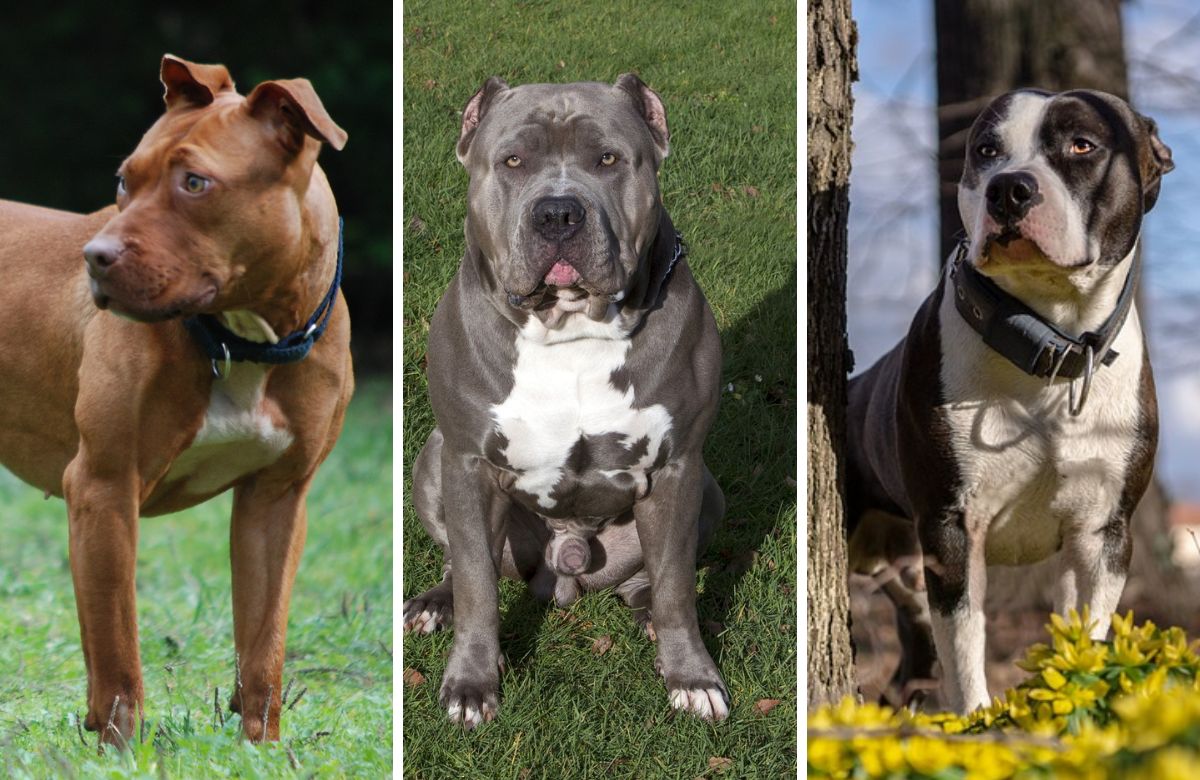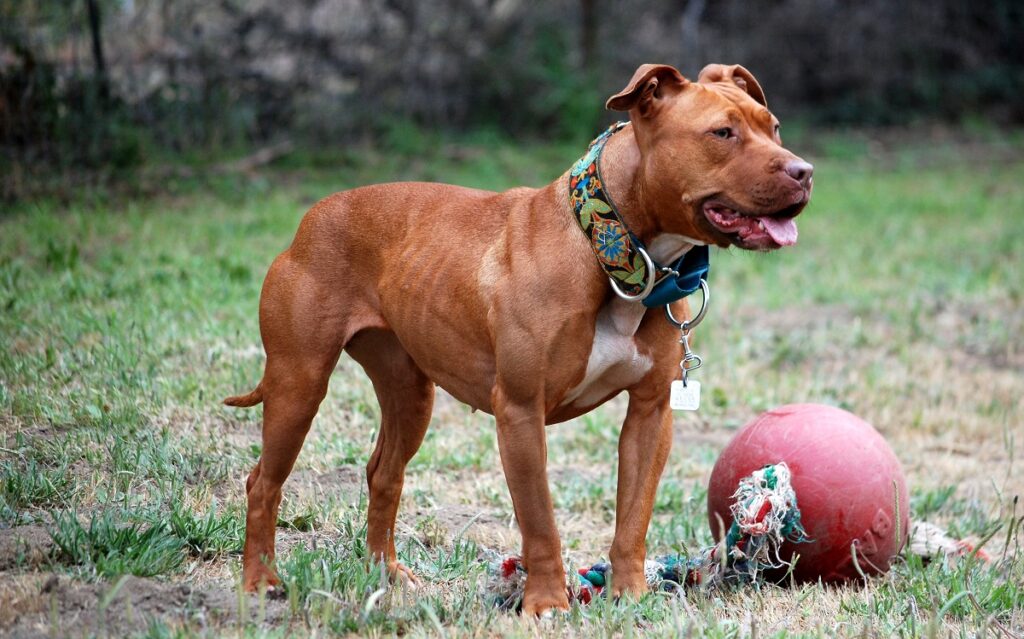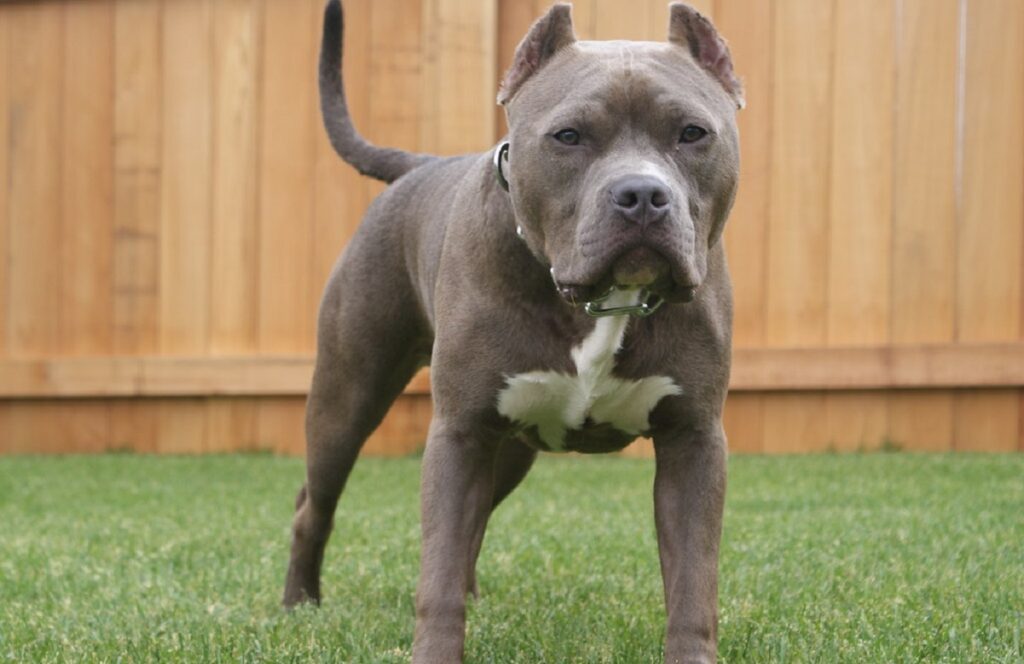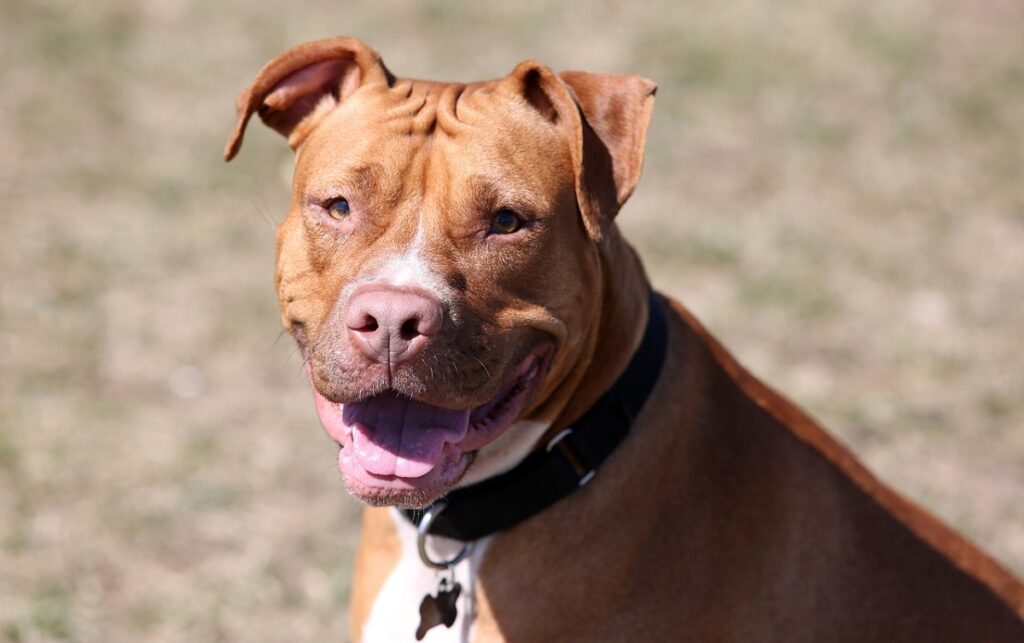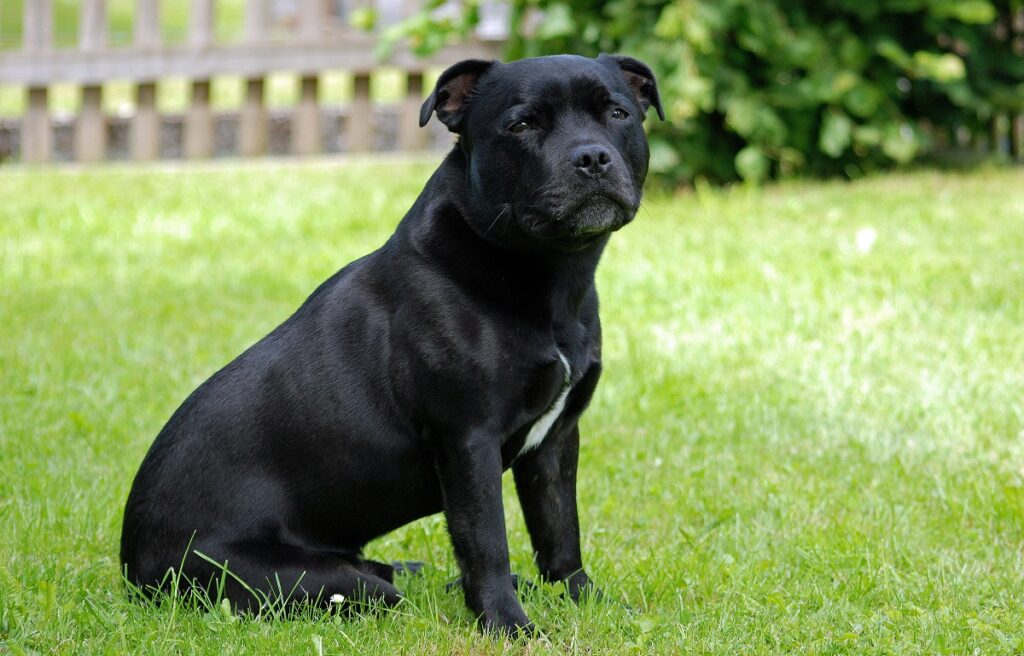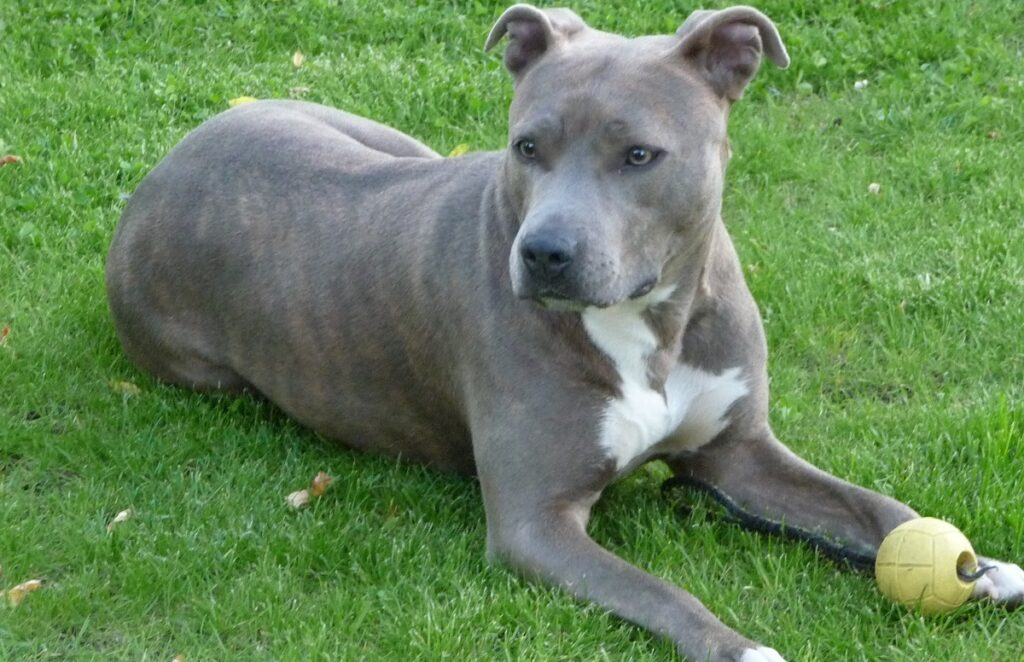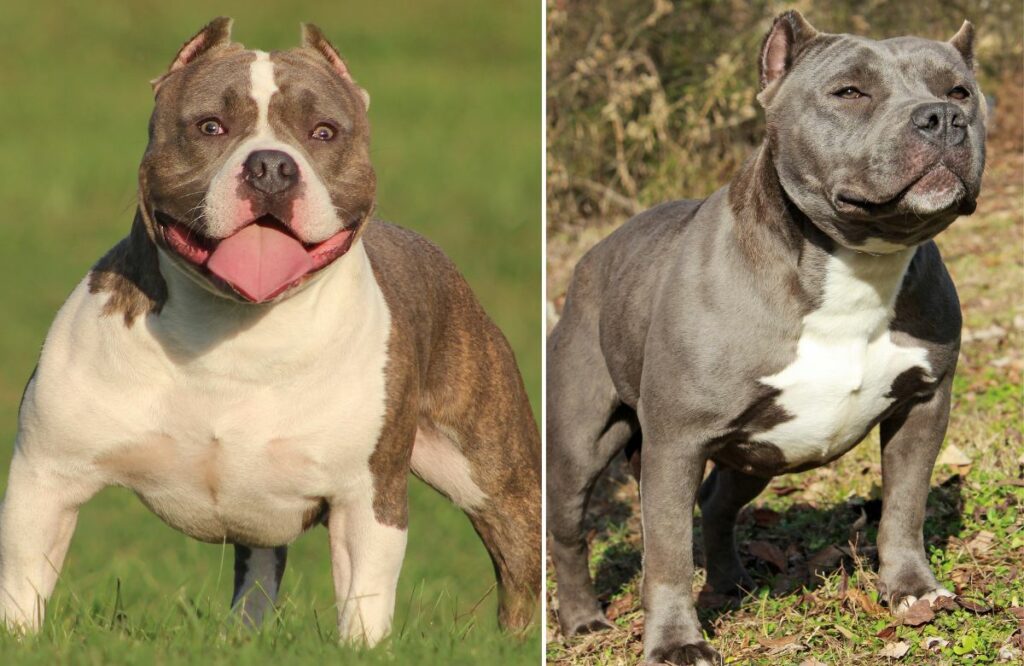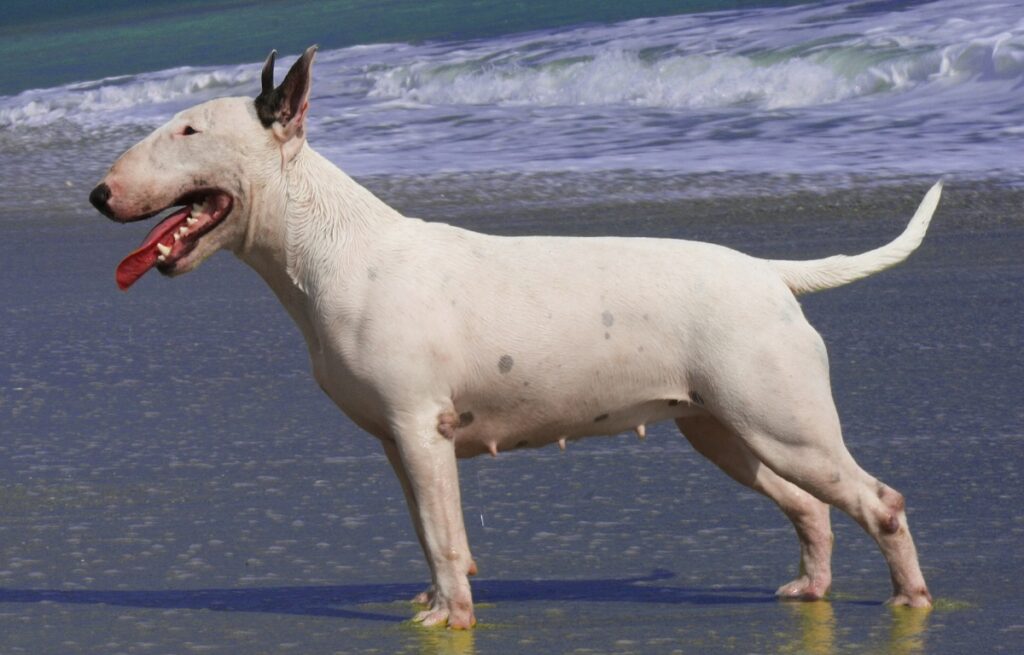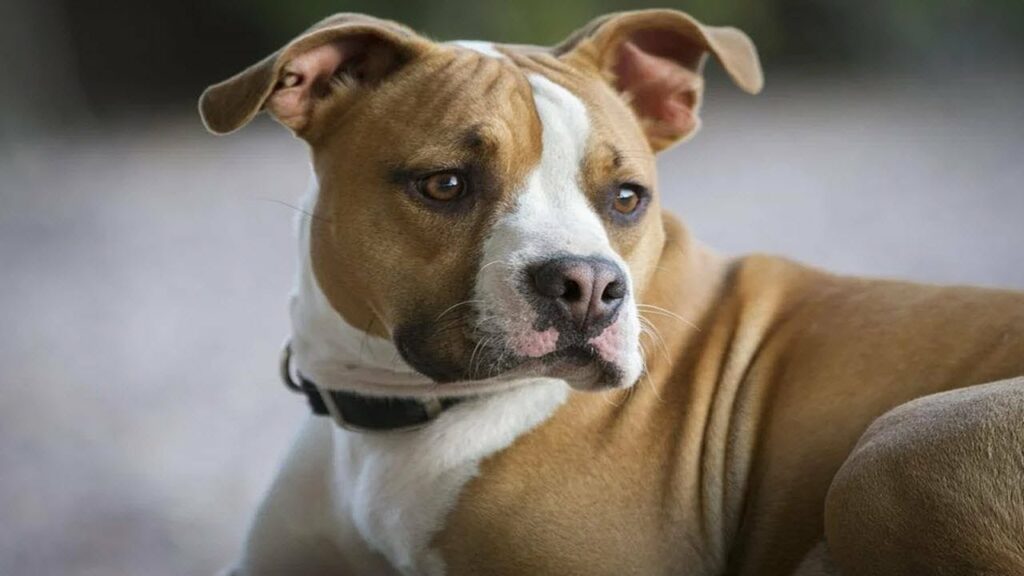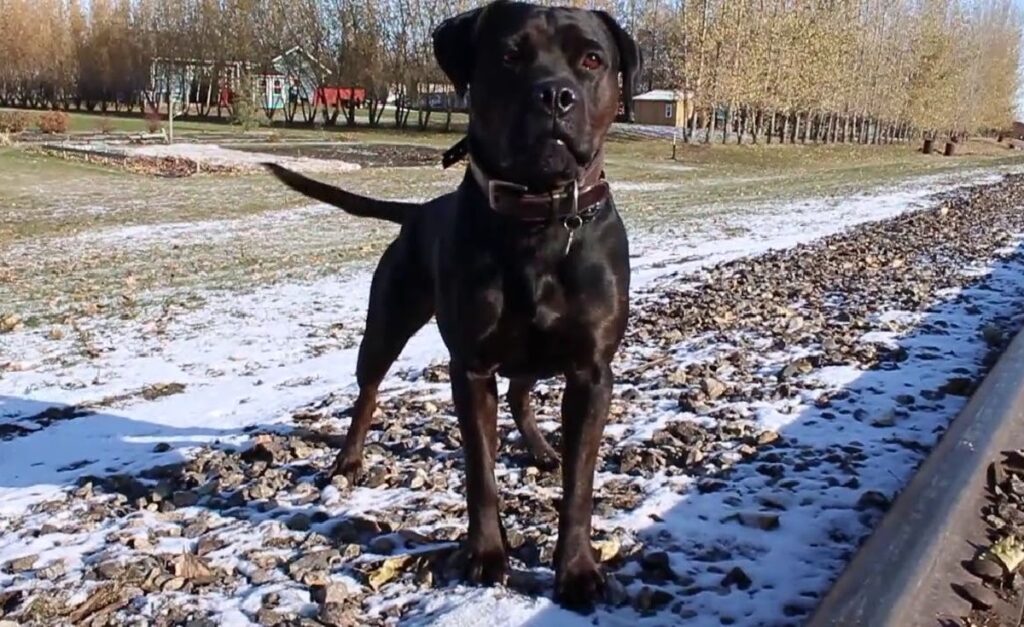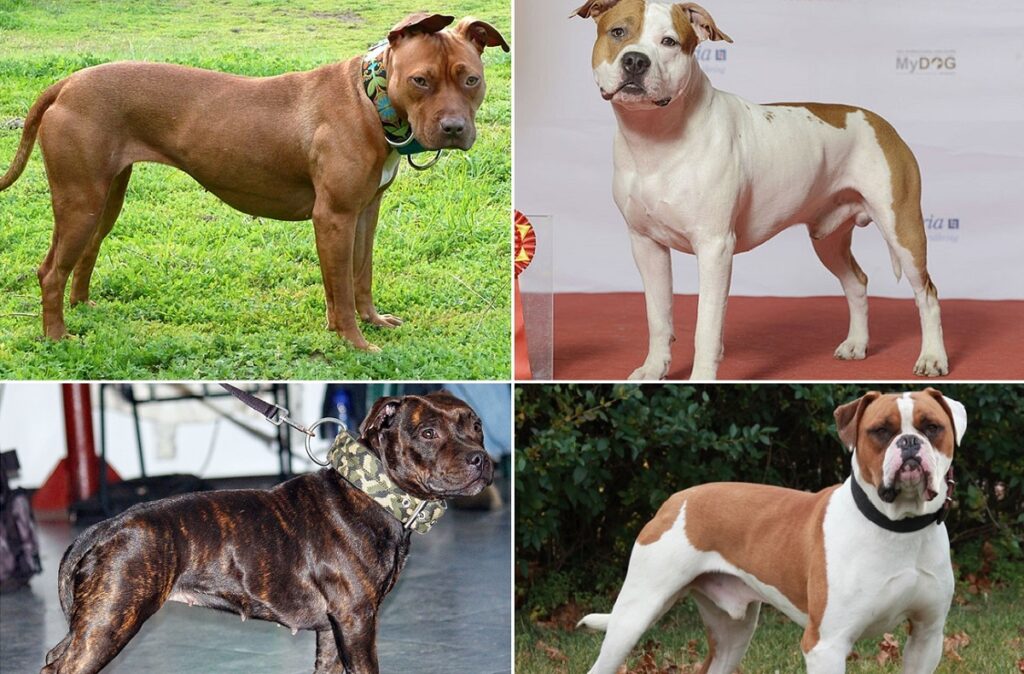Pit Bulls: the name conjures up images of powerful, sometimes intimidating dogs. But beneath the often-misunderstood exterior lies a diverse group of breeds with unique histories and temperaments. From the athletic American Pit Bull Terrier to the loyal Staffordshire Bull Terrier, this exploration delves beyond the stereotypes, uncovering the true nature of these intelligent and often affectionate companions. We’ll examine the distinct characteristics of each type, dispel common myths, and celebrate the rich tapestry of “Pit Bull” breeds.
I don’t know about you, but I have a very soft spot for pitbull-type dogs. They tend to get a very bad reputation and are perceived as dangerous because of the actions of a few bad actors. People have bred and used them for dog fighting, which has contributed to the stereotyping that they are dangerous dogs.
That said, the pit bull is not actually considered a breed by many. The American Kennel Club, for example, doesn’t recognize it, while the United Kennel Club only recognizes the American pit bull terrier. In actuality, pit bulls, commonly referred to as pitties are mixed-breed dogs that tend to share common characteristics.
Pit Bull Characteristics
Bully breeds are easily recognized by those familiar with them through the shape of their head, which consists of a broad, flat skull and muscular bodies. Pit bulls also have stiff short coats that come in a variety of patterns and colors, ranging from solid to brindle, and their round eyes are set well apart, giving them a unique look. Eye colors range and often depend on the coat color.
When it comes to their temperament, despite tons of misinformation out there, the breed is extremely loyal and affectionate. They bond with their owners and tend to be protective, especially around strangers.
Pitbulls are also excellent with children and have often been referred to as “nanny dogs” because of the way they watch over them. They’re well suited to being family dogs.
Types of Pitbulls
There are different types of pit bull breeds that fall under the umbrella term. The different types typically have their own set of defining physical characteristics that set them apart. Here are a few types of pits you might encounter.
American Pitbull Terrier
The American Pitbull Terrier was bred to be a working dog, driving cattle and sheep across the nation in the 19th century. Today, they’re great pets, but they’re often used as guard dogs due to their protective nature around strangers. They have a high prey drive and should be monitored around smaller animals, particularly ones they may not have grown up with.
The American Pit bull terrier varies in size from 17 to 21 inches tall and weighs between 30 and 60 pounds, making them a great dog for smaller spaces. A loyal and affectionate dog, American Pitbull Terriers love children but need socialization from an early age. American Pit Bull Terriers live between 8 and 15 years.
American Pit Bull Terriers tend to be more expensive, with prices starting at $1,300 and costing up to $2,500.
Blue Nose Pitbull
The Blue Nose Pitbull is a rare breed, and its name is actually a misnomer. Instead of blue, their noses are actually black or gray due to a double recessive gene. This gene also results in their coats turning blue or grey. They also tend to have blue eyes. They range in size from 18 to 21 inches tall and weigh between 30 and 60 pounds.
The coloring comes from inbreeding, which has led to more health issues, and hypothyroidism and skin allergies are the most common afflictions they suffer from. This dog needs an active family. It’s got a great temperament and is good with other animals when growing up with them. These types of pit bulls are intelligent but stubborn. They live 12 to 14 years.
They usually cost around $1,000 to 3,000 per pup, but this can vary depending on whether the Blue Nose Pitbull or the Red Nose Pitbull is trendier — the two tend to wrestle for that title.
Red Nose Pitbull
The Red Nose Pitbull is much like the Blue Nose variety, but there are distinguishable differences. For example, stating the obvious, they have reddish-pink noses that match their coats, which are typically brown, fawn, or red in color. They stand 14 to 24 inches tall and weigh between 22 and 78 pounds.
The Red Nose Pitbull is prone to cerebellar abiotrophy, which can lead to balance and coordination issues and hip dysplasia. These types of pits should go to families with older children because of their strength and size. However, they are gentle, affectionate dogs that are eager to please and very intelligent. They live to be between 8 and 15 years old.
Buying a puppy from a reputable breeder can cost around $1,000, though when this breed is trendy, that price will increase.
Staffordshire Bull Terrier
The Staffordshire Bull Terrier, known as Staffies, is a small type of pitbull that stands 13 to 16 high, with a maximum weight of around 35 pounds. They have a short, stocky build with the common blockhead you see in most types of pits. The Staffordshire originates from England but is bred with varieties from Scotland and Ireland, as well.
Staffordshire Bull Terriers tend to have a typical coloring of red/white or black/brindle patterns. Health concerns you should be aware of when it comes to Staffordshires are patellar luxation, cataracts (hereditary types), and hip dysplasia. The life expectancy of the breed is 12 to 14 years.
The Staffordshire Bull Terrier costs between $1,500 and $3,000.
American Staffordshire Terrier
The American Staffordshire Terrier, known as an AmStaff, originated in the United States. They are powerful with a muscular build and blocky heads but make an excellent family dog. Females range in height from 17 to 18 inches, while males are 18 to 19 inches on average. They tend to weigh between 40 and 70 pounds.
American Staffordshire Terriers are pit bull breeds recognized by the American Kennel Club (AKC) but will be docked by the organization if their coat is more than 80% white. It’s a very intelligent breed with a good-natured personality.
When it comes to health issues, the American Staffordshire Terrier is prone to autoimmune diseases, urinary tract infections, and skin allergies. They also require regular teeth brushing to avoid bad breath. American Staffordshire Terriers live between 10 to 15 years.
If you’re purchasing the American Staffordshire Terrier, you can expect to pay between $800 and $1,000.
American Bully
This is one of the bigger dogs in terms of weight. The American Bully dog has a short stature of 13 to 21 inches but can weigh between 70 and 120 pounds — but it’s not fat. The American bully is a very solid dog. They come in all types of colors.
American bullies are an extremely gentle breed. They’re loving dogs that are affectionate and are great pets. These pups are also funny — you’ll always be amused.
If you’re interested in adopting an American Bully, you’ll need a backyard or at least live a very active lifestyle. These pups need exercise; otherwise, they tend to become very bored, and that leads to destruction. An American Bully lives between 8 and 13 years.
If you’re looking for sticker shock, you’ll find it with the American Bully, which can cost from $2,000 to more than $10,000, depending on the pup’s lineage.
Monster Blue
The Monster Blue is a pitbull breed that’s bred in Brazil. It’s a massive dog with a proud, stocky stance and high-set ears that can be quite intimidating if you’re unfamiliar with the breed. It’s a cross between a Dogue de Bordeaux and a Neapolitan Mastiff. They tend to stand 15 to 20 inches tall and weigh 80 to 110 pounds.
However, these types of pit bulls are very loyal and affectionate to their owners and crave attention. It also has a happy-go-lucky demeanor that contradicts its size. They are strong and athletic and will need a good amount of training from a young age. They live between 8 and 15 years.
Chamuco
The Chamuco is a purebred breed of pitbull that is believed to have originated from Mexico. They have stocky bodies with short legs, but they’re powerful. You can typically find them in black, gray, white, brown, and tri-color options. It’s one of the smaller types of pit bulls, standing at 18 to 21 inches tall and weighing 25 to 40 pounds.
You’ll have to put in the effort to train and discipline this breed because it is very strong-willed. However, it’s very loyal, intelligent, and, by nature, very protective. The Chamuco makes a great guard dog and hunter because it has excellent eyesight, hearing, and smell. They live between 8 and 15 years.
The puppies tend to cost anywhere between $200 and $1,000.
Bull Terrier
The Bull Terrier is a very unique-looking dog that originated in the United Kingdom. It has a triangular face and a mostly white body that’s solid and muscular. They may also come in brindle, black, fawn, tri-color, and red and white varieties. It was bred as a fighting dog, but that’s gone by the wayside. The Bull Terrier tends to stand between 21 and 22 inches tall and weigh between 50 and 70 pounds.
The breed is keen and very eager to learn but also stubborn and requires a lot of training from a young age. They’re very protective but sweet at the same time. Despite originating in England, the bull terrier is not to be confused with English bulldogs.
English bulldogs resemble the American variety with flat faces and short, stocky builds. They’re another dog breed entirely. Bull terriers live between 10 and 14 years.
Buying a Bull Terrier can set you back anywhere from $800 to $2,000.
Colby
The Colby isn’t exactly a type, but a bloodline that originated in the United States, bred by John P. Colby, which is where it derives its name. They’re also one of the more difficult ones to find to adopt because of the bloodline. The Colby has a brick-like head with a muscular body and typically stands 17 to 19 inches tall, and weighs between 30 and 60 pounds. Colbies are great working dogs.
The Colby pitbull is a highly intelligent pup that learns and adapts quickly, so it’s important to engage it. You’ll need to prepare for a lifetime of training, and they will need to be socialized, and it’s best that this particular type has a fenced-in backyard.
They’re also real people pleasers and can be taught to participate in agility and obedience exercises, as well as therapy work. The Colby is prone to the same health issues as a pitbull: hypothyroidism, hip dysplasia, and allergies, but if they receive proper care, they can live 12 to 14 years.
The Colby pitbull is one of the most expensive, with a much higher price tag that can reach $20,000, because of its desired temperament and lengthy lifespan.
Stuffawler
The Staffawler has a short stature but is strong and muscular in appearance. It’s also well-known for its large grin. They were bred as fighting dogs, but today, they’re great family additions. Their height ranges between 13 and 16 inches tall, with a weight between 77 and 88 pounds.
Stuffawlers have short legs, so they lack the agility of some of their counterpart. Like all other pit bull breeds, they need to be socialized and tend to mirror the temperament of their owners. They’re good with children and other animals as long as they are raised together. They have an average life of 10 to 12 years.
They typically cost around $1,000.
Spike
Spike is a unique pitbull in that it’s a cross between a pitbull and a Dalmatian. It tends to be whiter in color, with most of its coat reflecting that of a Dalmatian’s pattern. They tend to be the same size in stature, so a Spike pitbull will weigh around 40 to 70 pounds and stand 22 to 24 inches tall.
Both dog breeds tend to have guard dog capabilities, so this is a common use for Spike pitties. They also have a calm demeanor and live the average lifespan of a pit bull, which is between 8 and 15 years. However, they are subject to deafness, a Dalmatian health issue, and hip dysplasia, which is common on the pitbull side.
Pynat
The Pynat is one of those pitbull types that stands out simply because its build is so different. Instead of the stocky stature we’re used to in the breed, the Pynat is slender, but don’t be fooled — underneath, it’s still muscular. They come in brown or tawny coats that may be streaked with other colors.
Cobra
The Cobra is a rare breed of pitbull. It much resembles the Red Nose variety but has a white coat that’s unblemished. Its eyes tend to be black or blue, though don’t be surprised to see one with one of each eye color.
Types of Pitbull Cross Breeds
People love the pitbull so much that they tend to breed it with other dogs with a specific set of characteristics. Here are some of the most common crossbreeds.
Pitbull Boxer Mix
Commonly referred to as a Bullboxer Pit, the Pitbull Boxer mix is a gorgeous breed that has a broad head with a short muzzle. They also have the Boxer’s long legs and a broad chest, with a smooth coat. The cross breed normally sits at 20 to 26 inches tall with a weight of 50 to 80 pounds.
As far as the personality goes, the Pitbull Boxer mix is a devoted dog that comes with a goofy side, showcasing the best personality traits of a Boxer. They also have tons of energy, and you will need to train and socialize them because they can be a bit overprotective.
These pups are prone to several health problems, including heart issues, hip dysplasia, cancer, and allergies. They live an average of 10 to 13 years.
Pitweiler (Pitbull Rottweiler Mix)
A Pitweiler is what happens when you breed a Pitbull with a Rottweiler, and what a pretty pooch it is. These dogs happen to be very large in stature, standing 20 to 23 inches tall and weighing between 65 to 100 pounds, with a very muscular body.
You will need to engage your Pitweiler with vigorous activity and training. They are very sensitive pups that tend to experience separation anxiety, which stems from the clingy nature of the Rottweiler. Pitweilers are also incredibly loving dogs that make loyal companions and should be considered a member of the family as they will demand your attention.
They may experience hip and elbow dysplasia due to their size, cerebellar abiotrophy, demodectic mange, or subaortic stenosis, a heart issue that needs monitoring. They live 8 to 10 years.
Pitsky (Pitbull Husky Mix)
If you’re looking for a very energetic dog, the Pitsky is your solution. These beautiful dogs are a cross between a Pitbull and a Husky. They stand 17 to 23.5 inches tall and have an average weight of 30 to 60 pounds.
Because they are extremely energetic, they need lots of daily exercise, training, and mental stimulation. As for their personalities, they are very sociable but stubborn creatures but enjoy spending time with other animals. Don’t be surprised if they’re vocal either, the Husky loves to talk! They have a bit longer life of 12 to 16 years.
Pitbull Lab Mix
A Pitbull Lab mix is sure to make the perfect family companion. Labradors are touted to be one of the most popular dog breeds in the world for families. The crossbreed is known as a Pitador or a Labrabull. They may be lean or muscular, or sometimes a blend of both. They have a height that ranges from 17 to 28 inches, and their weight can range from 40 to 90 pounds.
The mix is very loyal and extremely easy to care for, making them great pets. They are highly intelligent, which means you can easily train them, and they’re protective, but it comes from a good place of wanting to safeguard their family. Since both distinct breeds have an average life of 10 to 15 years, you can expect the same with this blend.
Considerations Before Owning a Pitbull Breed
Owning a pitbull brings unique joy, and what better way to show off your love for your loyal companion than by sporting one of our stylish Pitbull shirts? It’s the perfect way to declare your pitbull pride to the world!
However, if you’re thinking about adopting one of the bully breeds, there are many considerations you’ll want to keep in mind. Here are a few I recommend looking into before you adopt.
Legalities and Insurance
Because of the reputation the bully breeds have for being aggressive, some cities and towns deem them illegal to own and have breed-specific legislation. Additionally, if you rent, your landlord may have a stipulation against owning a pit bull.
Likewise, some insurance companies will not underwrite a policy if you have a pitbull in your home. Make sure you do your research and understand what legalities may apply in your area.
Training
Bully breeds are extremely intelligent, but some types are stubborn. This is one breed that needs a lot of early training and socialization, especially if you plan to have them around other people and other animals regularly.
Health Problems
Some types of pit bulls are prone to health issues that can end up being very costly in the long run. For example, hip dysplasia is common among the different types. This can lead to extensive discomfort down the line and surgery, which can run into thousands of dollars. Others have more serious problems like heart issues that develop from improper breeding.
Physical Needs
No matter what type of pitbull you have, you can reasonably expect them to be very active. These dogs need a lot of mental stimulation and tend to become destructive when they’re bored. Giving them regular exercise, such as playing with toys inside or outside, and letting them run is essential to their wellbeing.
Other Pets
If you have other pets in your home, it’s a good idea to adopt a pitbull when it’s a baby. That way, it gets the early socialization it needs. It’s important to know that many Pitbulls have a high prey drive, so they may target smaller animals.
Cost and Time Commitment
Like any other pet, owning pit bull dogs comes with the usual expenses: food, toys, regular visits to the vet, and grooming. Then, there’s the fact that owning a dog is a lifetime commitment. They are just like humans. They stress when their circumstances change, especially without warning.
FAQs
Which Dog Breeds Make Pit Bulls?
The pit bull derives from a combination of terrier and bulldog ancestry. They have been around since the 19th century (the 1800s), when they were originally bred for hunting and bull baiting.
What Is the Size of a Pit Bull?
Pit bull dog breeds are typically medium to large in stature, though some may be smaller. The actual size depends on the specific type of pit bull you own.
What Is the Cost of a Pitbull?
The cost of pit bull dogs depends on the breed as well. If you purchase from a reputable breeder, you’ll likely spend $1,000 or more. If you buy from a backyard breeder, you’ll probably pay less, but be wary of any health issues that may arise.
Are Pitbulls Dangerous?
Contrary to popular belief, it’s not the breed itself that’s dangerous, but rather, it depends on how the owners handle them. Any dog has the potential to be dangerous in the right situations. That said, some pit bulls do have a bad temperament, but that’s also true for any dog breed.
What’s the Average Lifespan of a Pitbull?
The average lifespan of a pitbull is typically between 10 to 15 years. Some types of pitbulls may have shorter lives depending on health problems.
Conclusion
Adopting a pitbull may be one of the best things you ever do. Despite the Pitbull statistics that try to paint the breed in a bad light, such as they’re aggressive dogs raised for dog fighting, the truth is they tend to be — when trained properly and raised right — some of the best dogs on Earth.
They do well walking on a leash with proper training and can easily be housebroken with crates. No matter which type of pit you are drawn to most, you can’t go wrong.
If you’re interested in dog fighting statistics or dog bite statistics, you can learn some amazing details about dog temperaments from them.
Pitbulls, encompassing various breeds often misidentified, deserve to be understood beyond the negative stereotypes. From the athletic American Pit Bull Terrier to the stocky Staffordshire Bull Terrier, each possesses unique traits and temperaments. Responsible ownership, training, and socialization are key to nurturing well-adjusted dogs, regardless of breed. By dispelling misinformation and appreciating the individuality within these powerful canines, we can foster a more positive and informed perception of pitbull-type dogs, ultimately ensuring their welfare and responsible integration into society.

